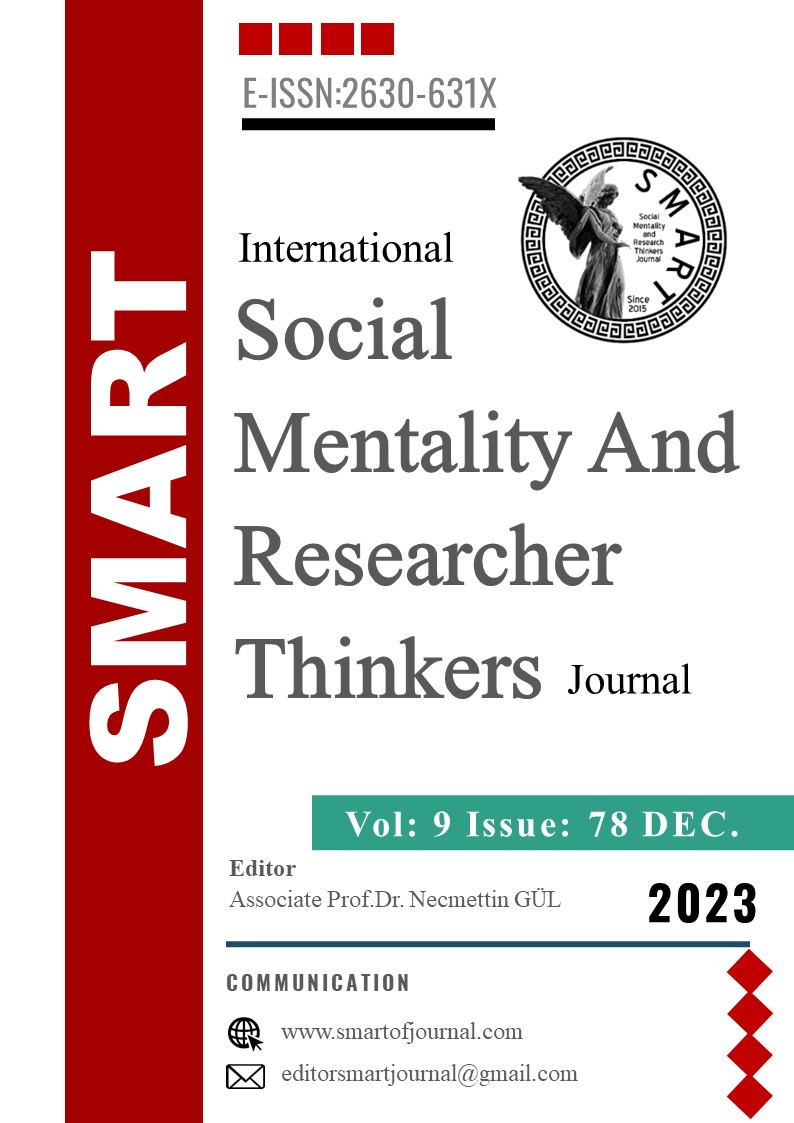Author :
Abstract
Dezavantajlı olsun veya olmasın, toplumun tüm kesimlerinin bir arada ve eşit düzeyde eğitim almasını savunan kapsayıcı eğitim anlayışı, Türkiye’de de yurt içi ve yurt dışı göçlerin yaşanması, kaynaştırma uygulamaları, her sosyoekonomik ve sosyokültürel kesimden bireylerin birlikte eğitim alması gibi durumlardan dolayı son dönemlerde dikkat çeken bir konu hâline gelmiştir. Bu sebeple bu çalışmada, sınıflarında öğrenme farklılıkları/zorlukları olan ve/veya geçici koruma altındaki öğrencileri bulunan ortaokul öğretmenlerinin, kapsayıcı eğitim doğrultusunda yaptıkları uygulamaların ve ihtiyaçlarının neler olduğunun ortaya çıkarılması amaçlanmıştır. Çalışma, nitel araştırma paradigmasına uygun olarak tasarlanan betimsel bir çalışmadır. Araştırmada yarı yapılandırılmış görüşme tekniği tercih edilmiştir. Çalışmada amaçlı örnekleme yöntemi çerçevesinde hareket edilmiş ve 2022 Eylül ayında Kayseri ilinin iki merkez ilçesindeki iki farklı ortaokulda görev yapan 2’si kadın, 8’i erkek olmak üzere 10 gönüllü öğretmen çalışmanın katılımcıları olarak belirlenmiştir. Katılımcıların görev yaptığı okullarda kaynaştırma uygulaması yapılmakta olup özel eğitim sınıfları da bulunmaktadır. Bununla birlikte çalışma yapılan okullarda geçici koruma altında bulunan ailelerin çocukları da yoğun olarak bulunmakta ve görüşme yapılan öğretmenler bu öğrencilerin de derslerine girmektedir. Ayrıca bu okullardaki öğrenciler, genellikle alt ve orta sosyoekonomik düzeylerde bulunan ailelerin çocuklarıdır. Görüşmelerden elde edilen veriler dijital ortama aktarılarak birebir transkriptleri alınmış ve betimsel analiz yöntemiyle çözümlenmiştir. Analiz sonucunda tüm öğretmenlerin, sınıflarındaki kaynaştırma öğrencileri için BEP’e sahip oldukları; fakat sınıflarındaki geçici koruma altındaki öğrencileri ve diğer öğrenme farklılıkları/zorlukları bulunan öğrencileri için ayrıca planlama yapmadıkları ortaya çıkmıştır. Bunlarla birlikte öğretmenlerin çoğunun kapsayıcı eğitim doğrultusunda dijital araçları önemli bulduğu, öğrencilerin motivasyon ve katılımlarını artırmada, çoklu temsil araçları sağlamada ve çoklu eylem ve ifade seçenekleri sunmada çeşitli materyallere ve yöntemlere başvurdukları ama başta finans desteği ve materyal desteği, geçici koruma altındaki öğrencilerin dil problemlerinin giderilmesi, sınıf mevcutlarının azaltılması gibi ihtiyaçlarının olduğu ve mevcut BEP’lerini de ilgili ihtiyaç ve problemler sebebiyle tam olarak uygulayamadıkları tespit edilmiştir.
Keywords
Abstract
The concept of inclusive education, which advocates that all segments of the society receive education together and at equal levels, regardless of whether they are disadvantaged or not, has attracted attention recently due to such situations as national and international migration in Turkey, integration practices, and individuals from all socioeconomic and sociocultural segments receiving education together. The aim of the current study was to reveal the practices and needs of secondary school teachers who had students with learning differences/difficulties and/or students under temporary protection in their classes, in line with inclusive education. The study was a descriptive study designed in accordance with the qualitative research paradigm. Semi-structured interview technique was considered appropriate for the purpose of the research. The sample was determined within the framework of purposeful sampling method and 10 volunteer teachers (2 females and 8 males) working in two different secondary schools in two central districts of Kayseri province in September 2022, were determined as participants of the study. Integration practices were implemented in the schools where the participants worked, and there were also special education classes. In addition, there were many children under temporary protection in the schools where the study was conducted, and the teachers interviewed also attended the classes of these students. In addition, the students at these schools were generally children of low or middle socioeconomic class families. The data obtained from the interviews were transferred to the digital media, verbatim transcripts were taken and analyzed using the descriptive analysis method. As a result of the analysis, it was revealed that all teachers had an IEP for the integrated students in their classes, but they did not prepare separate plans for the students under temporary protection and for the ones with other learning differences/difficulties in their classes. In addition, it was determined that most of the teachers found digital tools important in line with the inclusive education and that they resorted to various materials and methods in increasing students' motivation and participation, providing multiple representation tools and offering multiple action and expression options. However, it was also revealed that the teachers could not fully implement their existing IEPs due to their needs for financial and material support, and due to language problems of the students under temporary protection and the large class size.
